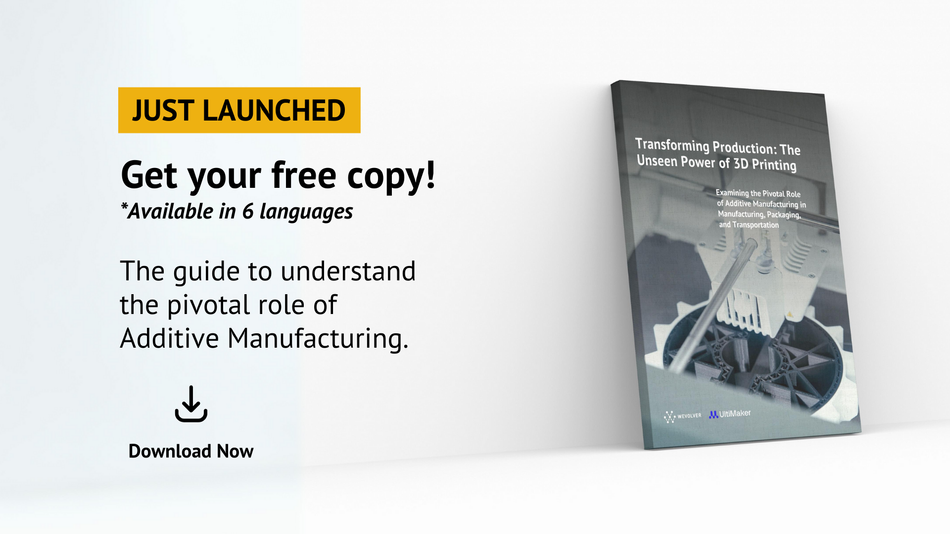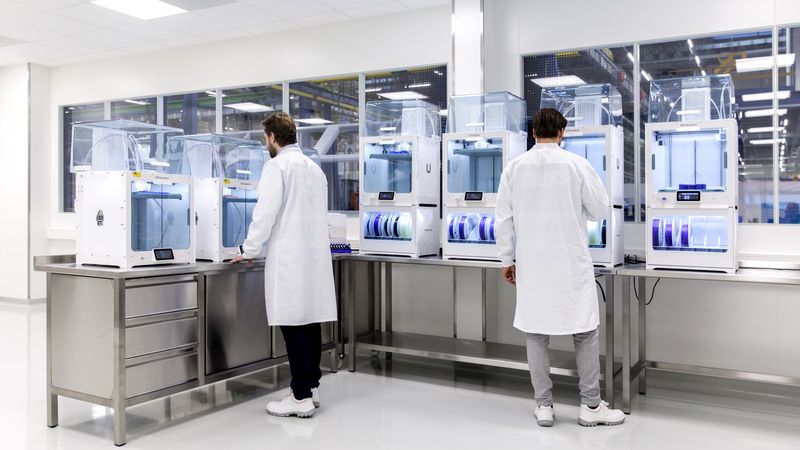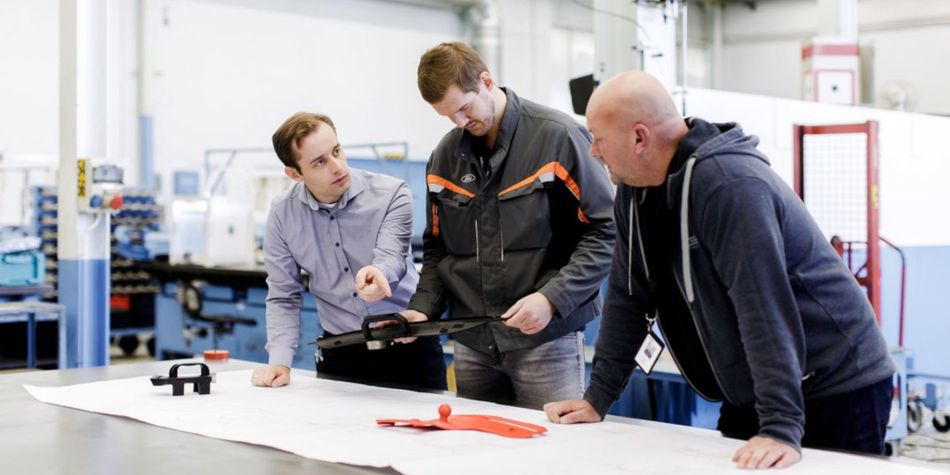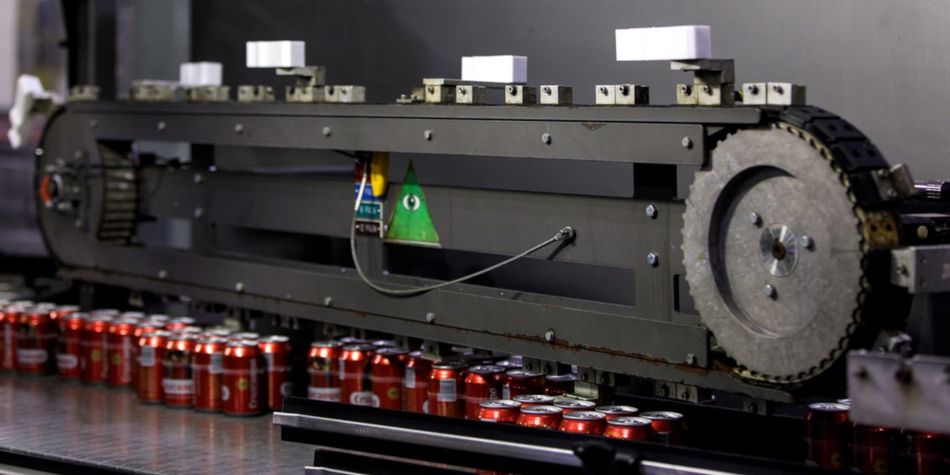Gaining an Understanding of the Impacts of Additive Manufacturing
Introducing the first article in a new series, making clear the impact of additive manufacturing on the manufacturing industry, transport, packaging, and STEAM.
Transforming Production: The Unseen Power of 3D Printing
With the playbook “Transforming Production - The Unseen Power of 3D Printing”, manufacturers and engineers can draw inspiration from experts who are already using 3D printing in their production processes. This free PDF provides high-value application suggestions and detailed case studies of what you can achieve using FDM (Fused Deposition Modeling) 3D printing technology.
Fill in this short form to get your copy directly to your inbox.

Since the technology’s invention in the 1980s, additive manufacturing (also known as 3D printing) has evolved at a tremendous rate, transforming and expanding from a niche prototyping technology, to a consumer-focused product, to a truly disruptive industrial production method.
Today, additive manufacturing has found countless applications across a diverse array of industries and sectors, spanning everything from eyewear to jet engines. In this new series, supported by UltiMaker, we want to cover the far-reaching impacts of additive manufacturing by zooming in on four verticals where 3D printing is proving to be a game changer: Manufacturing, Transportation, Packaging, and STEAM. In this series, we’ll be looking at how additive is being used in each vertical, covering what benefits it offers, relevant case studies, current trends and what lies ahead.
The state of additive manufacturing today
There has always been a degree of hype to 3D printing: in 2012, the technology made it to the top of Gartner’s Hype Cycle for Emerging Technologies and more recently, the additive manufacturing industry got a ton of coverage for its role in printing PPE and other COVID-19 devices. Despite these moments of “hype” and some early overinflated promises (like the expectation that every household would have a 3D printer), additive manufacturing has been making steady progress in its maturation. Today, it’s clearer than ever what the impacts of 3D printing are and where its potential lies.
What’s particularly interesting about AM’s evolution is that it has followed several different avenues. One of the technology’s earliest uses—rapid prototyping—has become practically ubiquitous across many industries. But the technology has also become a popular option for other applications, such as research, tooling and end-use parts. As we’ll see in each vertical, additive manufacturing is changing how people and companies make things at practically every step.
At the foundation of the process’ growth and success are some unprecedented capabilities, including design freedom, scalable customization, and production agility. More than any other manufacturing technology, additive systems are ideal for producing components with complex geometries (including lattices or internal channels) and small production runs (including one-off prototypes or custom products)—all while remaining economical.
Additive manufacturing is also unlocking accelerated production schedules and more efficient manufacturing workflows. And not just in one way. On one side, the ability to rapidly print, test, and reiterate prototypes speeds up design cycles dramatically. On another, 3D printed tooling, jigs and fixtures can improve traditional manufacturing workflows, making them more efficient[1] and foolproof while minimizing production down times. In an end-use capacity, additive manufacturing can be used to create parts directly without the need for tooling[2] and in small-batch volumes, cutting down on lead times and production costs.
A glimpse at the verticals in focus
Before highlighting each vertical in a dedicated article, we want to provide a brief overview of each segment—a little preview, if you will.
Manufacturing
In the manufacturing vertical, additive processes are proving to be indispensable, particularly as the shift to digital manufacturing continues to gain steam. Manufacturers across an array of segments are quickly realizing the benefits of 3D printing, adopting it not so much to replace existing processes but to complement and reinforce them.
Applications like 3D assembly fixtures, jigs, and reverse-engineered replacement parts for machines are helping manufacturers to build more resilient production workflows that can easily be customized for new production capabilities. At the same time, 3D printed tooling accelerates lead times, reduces costs, improves operator ergonomics and safety, and makes manufacturers less reliant on external production partners[4] . This segment of applications in manufacturing has really taken off thanks to the introduction of engineering-grade plastic materials for 3D printing, which can withstand the stresses of a manufacturing environment and are substantially cheaper than metal.
3D printing also gives manufacturers another method for turning raw materials into finished goods. AM’s unique capabilities have made it viable for manufacturers to create on-demand components (including spare parts), as well as advanced parts with complex optimized geometries, and customized products.
Transportation
In this vertical focus, we’re looking at how additive manufacturing is helping to advance the development and production of different modes of transport, with a particular emphasis on the automotive sector.
3D printing is now widely adopted by automotive companies and is used in a plethora of ways. On the research and development (R&D) side, 3D printing is used to make visual and functional prototypes. Automotive brands are also employing the technology to explore new automotive designs, including more efficient engines, lightweight assemblies, and structures optimized for ergonomics or aerodynamics. On assembly lines, 3D printed tools and jigs are streamlining workflows.
As we’ll see in greater detail, the potential for additive in automotive and transport industries —like aerospace, maritime, and rail—is limitless. Many players in the vertical are pushing the boundaries of what can be done in terms of more fuel efficient transport systems, production agility, and transport safety thanks to the freedom and flexibility of additive manufacturing. Dutch airline KLM is just one example: the company is promoting a circular economy by turning used water bottles from flights into filament, which is then used to produce maintenance tools.
Packaging& Automation
This vertical is perhaps slightly less publicized than others, but additive manufacturing’s impact on it has been significant. Many major packaging suppliers have adopted the technology to speed up the development of new packaging designs, shorten lead times for packaging molds, tools[11] , and spare parts, as well as introduce more customization opportunities[12] , such as end-of-arm tooling and grippers.
Global brands such as Heineken have decreased lead times[13] (by as much as nine months) and production costs [14] by 3D printing spare parts for packaging and assembly machinery. Other major companies have cut tooling costs and enabled greater packaging design variety by developing 3D printed inserts for injection molding and blow molding. Luxury brands are turning to AM to create bespoke, limited addition packaging. And that’s just the tip of the iceberg.
It’s impossible to talk about packaging without discussing the environment. Unfortunately, packaging is a significant source of waste in our world, and sustainability is today a key priority for both brands and consumers. Additive manufacturing can be used to produce more ecological packaging made from recycled or biodegradable materials, such as PHA.[15] It can also open up opportunities for more sustainable designs that minimize material usage while maintaining quality.
STEAM
STEAM (Science, Technology, Engineering, Arts, Mathematics) is an important vertical when it comes to additive manufacturing. In the classroom, 3D printing provides a dynamic and engaging way for students of all ages to learn about digital design and fabrication. Entry-level 3D modeling software and 3D printers help students to practice a range of skills, including technical skills like computer-aided design, as well as more general skills like creativity, collaboration, and problem solving.
The multidisciplinary nature of 3D printing also positions it well to introduce STEAM topics to a wider range of students, including demographics who have historically been excluded from STEAM fields, like girls.
In higher education and professional research settings, additive manufacturing is playing a key role in advancing vital research projects. It’s often in these environments that new innovations and ideas are born, including 4D printing, advanced materials, bioprinting, and more. Additive manufacturing gives researchers the tools and ability to play, explore, and create the new products and solutions of tomorrow.
Stay tuned for more
Whether you’re new to the additive manufacturing industry or have a wealth of experience, be sure to watch this space for the upcoming publications in this series. In the next article we’ll be discussing the impacts of additive in manufacturing and how the technology is changing long-standing production paradigms.
About the sponsor: Ultimaker
UltiMaker is a global leader in the 3D printing industry with the mission to accelerate the adoption of additive manufacturing by providing a comprehensive desktop 3D printing ecosystem of hardware, software, and materials. UltiMaker combines two of the leading desktop 3D printing brands–Ultimaker and MakerBot–to advance the availability of accessible and easy-to-use 3D printing solutions for any application, while inspiring the industry to a future state of responsible and sustainable manufacturing.

References:
1. Gartner's 2012 Hype Cycle for Emerging Technologies Identifies "Tipping Point" Technologies That Will Unlock Long-Awaited Technology Scenarios [Internet]. Stamford, Connecticut. Business Wire. 2012 August 16. Available from: https://www.businesswire.com/
2. Steven van de Staak. Heineken: Ensuring production continuity with 3D printing [Internet]. Ultimaker. 2019 May 21. Available from https://ultimaker.com/learn/
3. Sky’s the Limit: Sustainable 3D Printed Tooling with KLM Royal Dutch Airlines [Internet]. Amsterdam, NL. Reflow Filament. 2020 March 11. Available from: https://reflowfilament.com/



